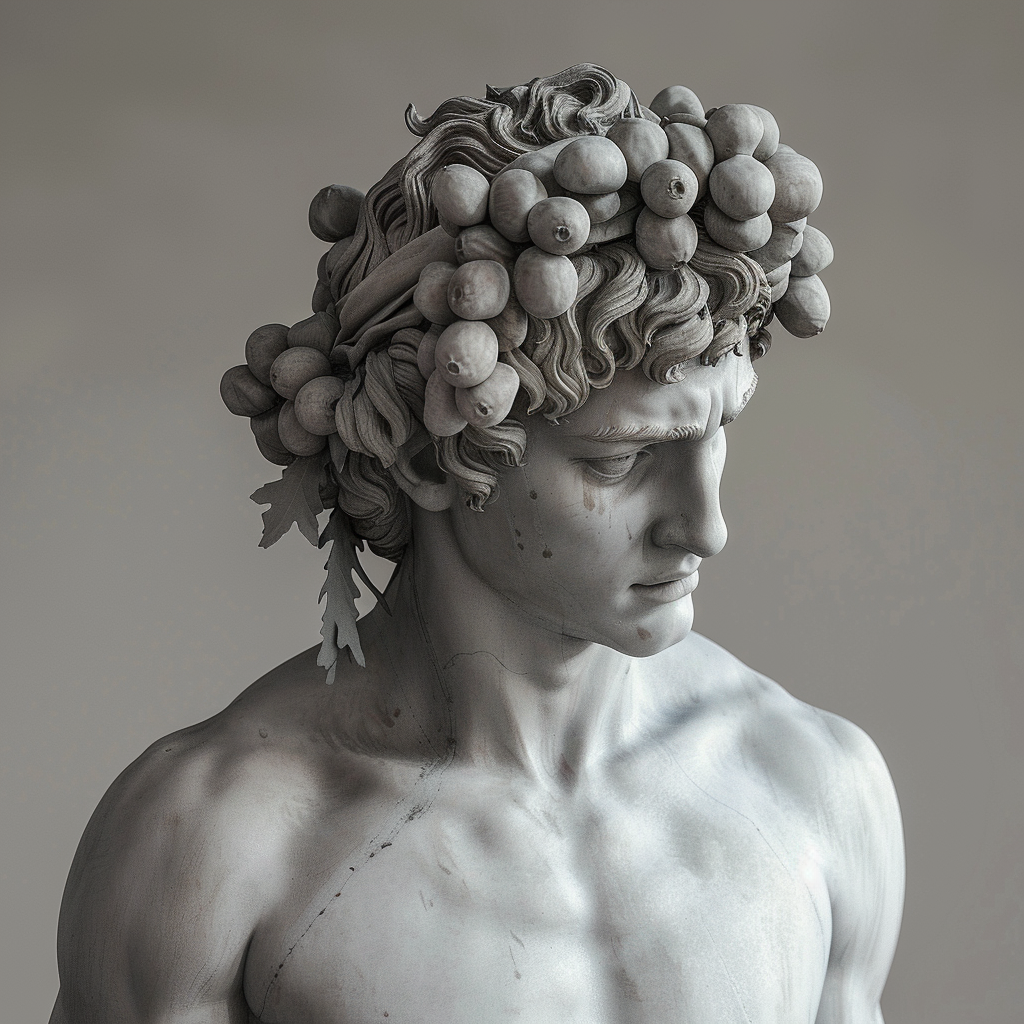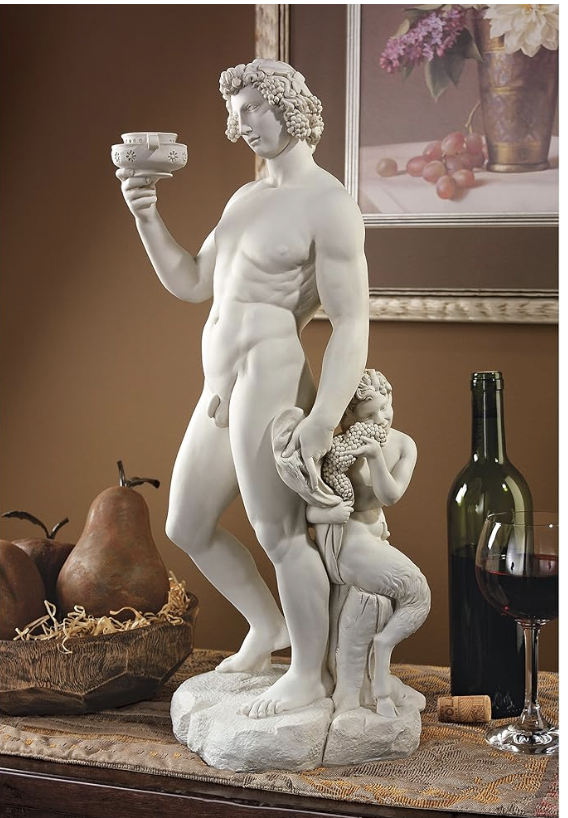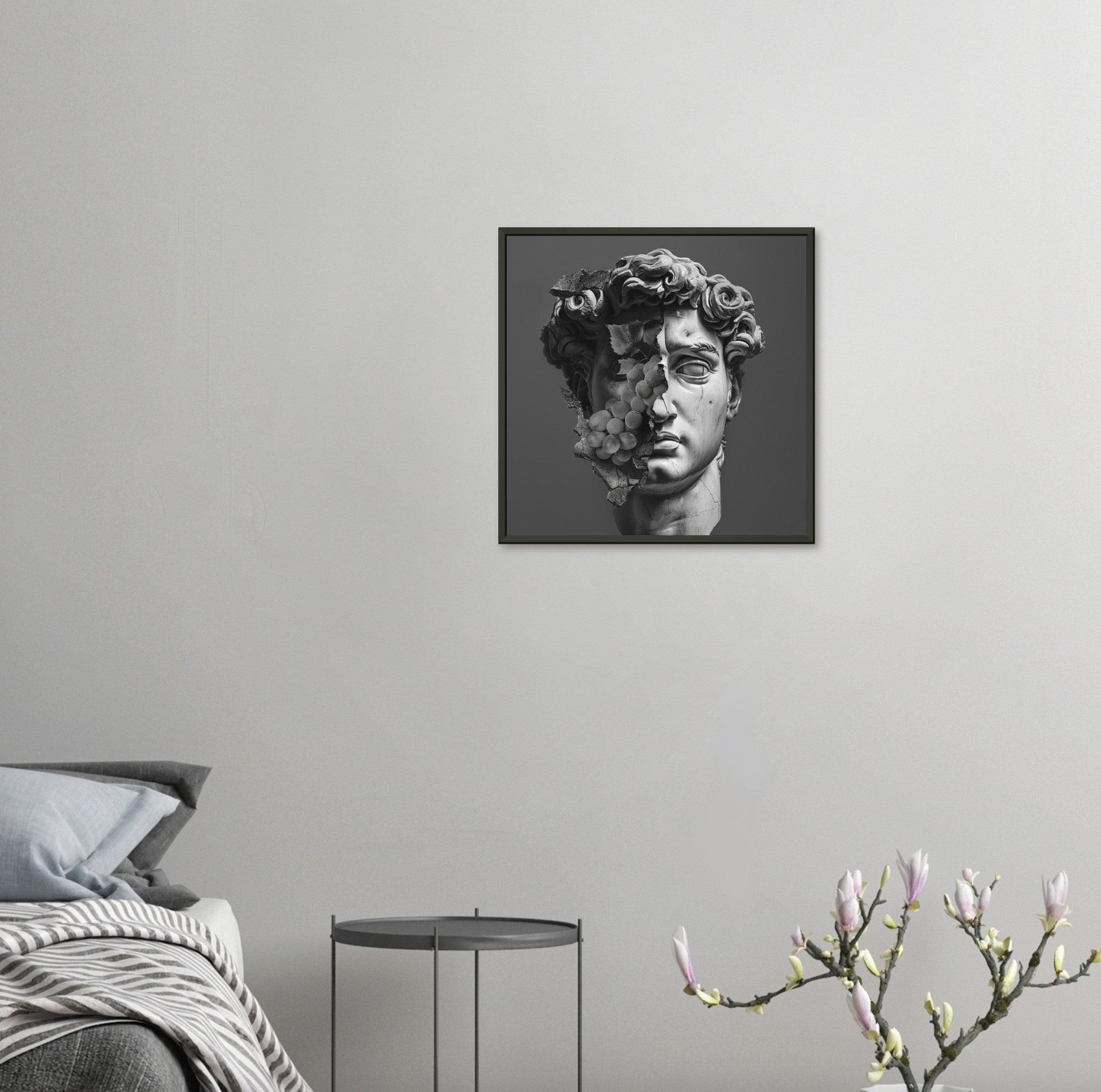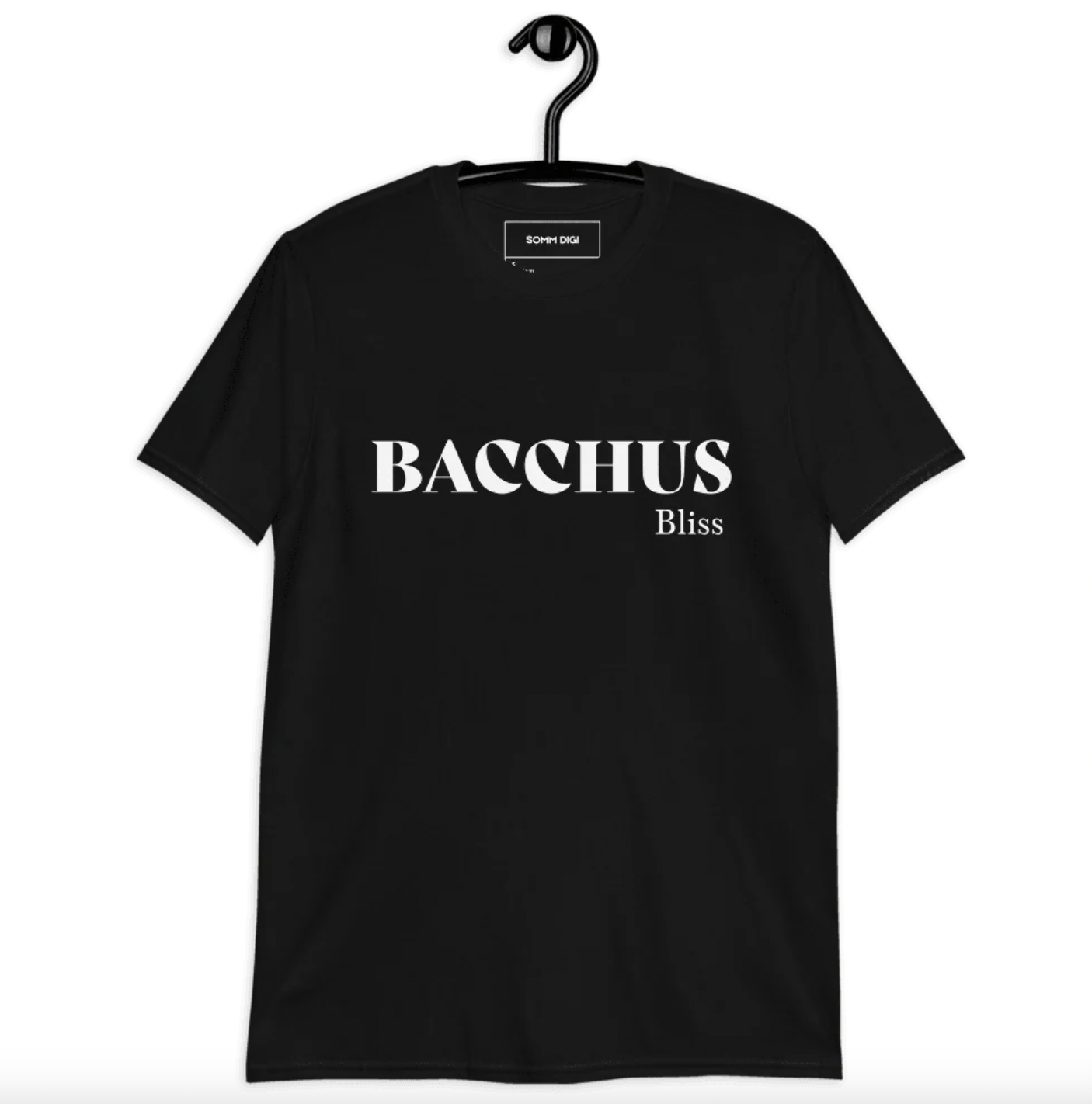Discover the Magnificence of Bacchus: God of Wine, Art, and Sculpture
Bacchus, the Roman god of wine, has been prominent in mythology, art, and culture for centuries. This blog delves into the historical background, artistic representations, and modern interpretations of Bacchus, highlighting sculptures by Michelangelo and Caravaggio and the famous painting "Bacchus and Ariadne."
Additionally, explore how you can bring a touch of this divine legacy into your home with stunning Bacchus sculptures available at Somm Digi Shop and through Amazon affiliate links.
Introduction to Bacchus
Bacchus, also known as Dionysus in Greek mythology, is the god of wine, fertility, and revelry.
His influence extends beyond mythology into various art forms, making him a symbol of celebration and ecstasy.
For more information about Bacchus, you can also read our blog: click here.
Historical Background of Bacchus
The Origins of Bacchus
Bacchus originated from Greek mythology as Dionysus, son of Zeus and Semele. His birth and early life were filled with drama, setting the stage for his association with transformation and rebirth.
Bacchus in Roman Mythology
When the Romans adopted Dionysus, they renamed him Bacchus. He became a central figure in their mythology, celebrated in numerous festivals and depicted in various art forms, symbolizing not just wine, but the human experience of joy and sorrow.
Bacchus: God of Wine
Bacchus and the Cult of Wine
Bacchus is often depicted with grapevines and a goblet, underscoring his deep connection to wine. The cult of Bacchus involved rituals that embraced the intoxicating effects of wine, promoting freedom from social norms and personal liberation.
Festivals and Celebrations
The Bacchanalia, wild and mystic festivals of Bacchus, were known for their ecstatic celebrations, which included music, dancing, and, of course, copious amounts of wine. These festivals played a significant role in ancient Roman culture.
Michelangelo's Bacchus Sculpture
Overview of Michelangelo's Work
Michelangelo's Bacchus, created in 1496-1497, is a masterpiece of Renaissance sculpture. It symbolizes the god's dual nature of joy and chaos and showcases Michelangelo's mastery in portraying the human form with divine grace.
Artistic Significance
Michelangelo's Bacchus is celebrated for its lifelike representation and dynamic posture. The sculpture captures Bacchus in a relaxed, almost drunken state, holding a goblet of wine, with a satyr playfully clinging to his leg.
Interpretation and Themes
The sculpture embodies themes of sensuality and indulgence, reflecting Bacchus's hedonistic aspects. It also explores the balance between human vulnerability and divine power, a common theme in Michelangelo's work.
Caravaggio's Bacchus Sculpture
Overview of Caravaggio's Work
Though primarily known as a painter, Caravaggio also significantly contributed to sculpture. His depiction of Bacchus is marked by a realistic approach, capturing the god's human traits and divine essence.
Artistic Techniques
Caravaggio's use of chiaroscuro, the contrast between light and dark, brings a dramatic intensity to his Bacchus works. This technique highlights the contours of the sculpture, adding depth and emotion.
Symbolism and Meaning
Caravaggio's Bacchus sculptures often depict the god in a youthful and almost androgynous form, symbolizing the fluidity of human experience and the blending of masculine and feminine qualities.
Bacchus and Ariadne
The Myth of Bacchus and Ariadne
The love story of Bacchus and Ariadne is one of the most romantic tales in mythology. Theseus abandoned Ariadne on the island of Naxos, and Bacchus discovered her. He fell in love with her and made her his immortal wife.
Analysis of the Painting
Titian's "Bacchus and Ariadne" vividly portrays this myth, capturing when Bacchus leaps from his chariot to rescue Ariadne. The painting is renowned for its rich colors and dynamic composition, symbolizing love's triumphant power.
Artistic Influence and Legacy
The painting has inspired countless artists over the centuries, becoming an iconic representation of Bacchus's themes of love, transformation, and divinity. It stands as a testament to the enduring legacy of myth in art.
Bacchus in Renaissance Art
Bacchus in Sculpture
During the Renaissance, Bacchus was a popular subject among sculptors. Artists like Michelangelo and others were drawn to his complex character, blending joy, chaos, and divine influence.
Bacchus in Painting
Renaissance painters depicted Bacchus in various contexts, from grand feasts to intimate moments. These works often explored the god's duality and his impact on human emotions and society.
Modern Interpretations
Bacchus in Contemporary Art
In modern art, Bacchus continues to inspire. Contemporary artists reimagine him through various media, exploring hedonism, transformation, and the human connection to nature.
Bacchus in Popular Culture
Bacchus's influence extends into popular culture, appearing in films and literature and as a symbol in wine branding. His image represents celebration, indulgence, and the joyous aspects of life.
Bacchus in Literature
Bacchus in Ancient Texts
Ancient poets and writers, such as Ovid and Euripides, often referenced Bacchus in their works, highlighting his role in mythology and his influence on human behavior and culture.
Bacchus in Modern Literature
Modern authors continue to explore Bacchus's themes, using his mythology to delve into human psychology, societal norms, and the complexities of pleasure and excess.
Bacchus Sculptures in Your Home
Decorating with Bacchus Sculptures
Incorporating Bacchus sculptures into your home decor can add a touch of classical elegance and a nod to the rich cultural heritage of ancient Rome and Greece. These pieces serve as conversation starters and symbols of celebration.
Benefits of Bacchus Art in Interior Design
Bacchus art can enhance the aesthetic appeal of your space, creating an atmosphere of sophistication and historical depth. It also reflects an appreciation for fine art and mythology.
How to Choose the Perfect Bacchus Sculpture
When selecting a Bacchus sculpture, consider size, material, and style. Whether you prefer a classic marble piece or a modern interpretation, there are options to suit every taste and decor scheme.
Wine and Bacchus
Wine Varieties Associated with Bacchus
Certain wine varieties are traditionally associated with Bacchus, reflecting his legacy as the god of wine. These include robust reds and aromatic whites, perfect for celebrating his spirit.
Wine Tasting Events Inspired by Bacchus
Hosting a Bacchus-themed wine-tasting event can be a delightful way to honor the god of wine.
Pair wines with ancient Roman delicacies and share stories of Bacchus's mythological escapades to create an immersive experience.
Conclusion
Bacchus, the god of wine, continues to inspire art, culture, and celebrations. From ancient mythology to Renaissance masterpieces and modern interpretations, his legacy is a testament to the enduring power of joy and transformation.
Whether through sculptures or paintings, bringing Bacchus into your home can add a touch of divine celebration to everyday life. Explore the stunning Bacchus sculptures at Somm Digi Shop and Amazon to start your own collection and honor this timeless deity.













